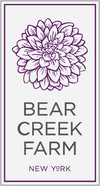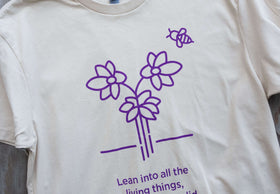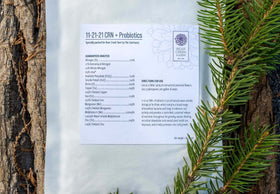During a February ice storm that has gripped the Northeast, the tree branches, encased in diamond sheaths, drip and glisten in the sunlight. Winter colors are a treat, because they flicker and wane. An ice storm on a bright day (yellow sun set against a blue sky) makes one squint. Our collective senses about contrast in colors are heightened. So much of the northeast winter is dark and monochrome.
It is difficult to believe that in a couple of short months, spring will arrive, followed by summer. Winter is, in a sense, a gift. There is so much floral beauty lying dormant in the ground waiting to come back. It can be hard to be patient. Sometimes I try to practice a kind of mindfulness where I deliberately look at the blue snow in the evening, reflecting purple and orange clouds hung above. I think about flowers. I imagine what is yet to come, but I do not know.
I am reminded of a child’s story, called Frederick, by Leo Lionni, about a field mouse who stores up memories of summer colors during the winter. When his friends complain that he is not helping them to collect food and make shelter, he explains that he is gathering necessary memories of sustaining beauty. “And when he told them of the blue periwinkles, the red poppies in the yellow wheat and the green leaves of the berry bush, they saw the colors as if they had been painted in their minds.”

With early spring the first flowers come. Poppies creep up, and then tulips. The sunlight gains a little strength, and the gradually few degrees of warmth. Suddenly, a carpet of blue flowers overcomes a yard. In June, the peonies arrive (in time for firefly season). Late summer delivers dahlias (even as the evenings cool down.)
Flowers break all the rules. The colors promised will vary. The shape of petals will catch you off guard. Give into it. As you tend the idea of your imagined garden in winter – gazing from a kitchen window onto a patch of snow – recognize that nature is there to offer its own surprises. The more wedded one is to a specific aesthetic outcome, the more one is likely to be disappointed. Seasoned flower growers understand the experience of planting flowers as humbling and rewarding in equal measure. One may plan a garden. One may follow all kinds of rules. But nature is in charge. See what she delivers you - and be open to this undisciplined and colorful sprawl.
I confess to have conceived of many gardens planted in one way – that came up in another way entirely. Among the most important things I have learned as flower grower, is that over-devotion to an idea is a mistake, a distraction. It impedes opportunities for personal growth. This “outcome” of gardening is, tragically, too often overlooked. Planting flowers and partnering (in some small way) with nature, is a way to let go of the rigid discipline that so often binds how we feel about ourselves. We may tend flowers, but they tell their own story. Flowers (a petal, a stem) remind us that beauty often expresses itself beyond our wildest preconceived imaginings. Flowers flow from the sum total of natural beauty. There is liberation in untethering oneself from a specific result and, instead, embracing what is, invariably, a better idea.
Springing from elemental mystery, a flower comes back. (We may know how, but still, how?) For those of us too impatient to practice mindfulness on a studio mat, a garden allows a similar freedom to become personally delinked from set ideas with measurable rubrics. Flowers feed our soul and our ability to embrace regenerative spontaneity. As our flowers grow, in whatever manner they will, so too do we.





I wish this was a book so I could keep reading it. Thank you for sharing these beautiful lessons and words.